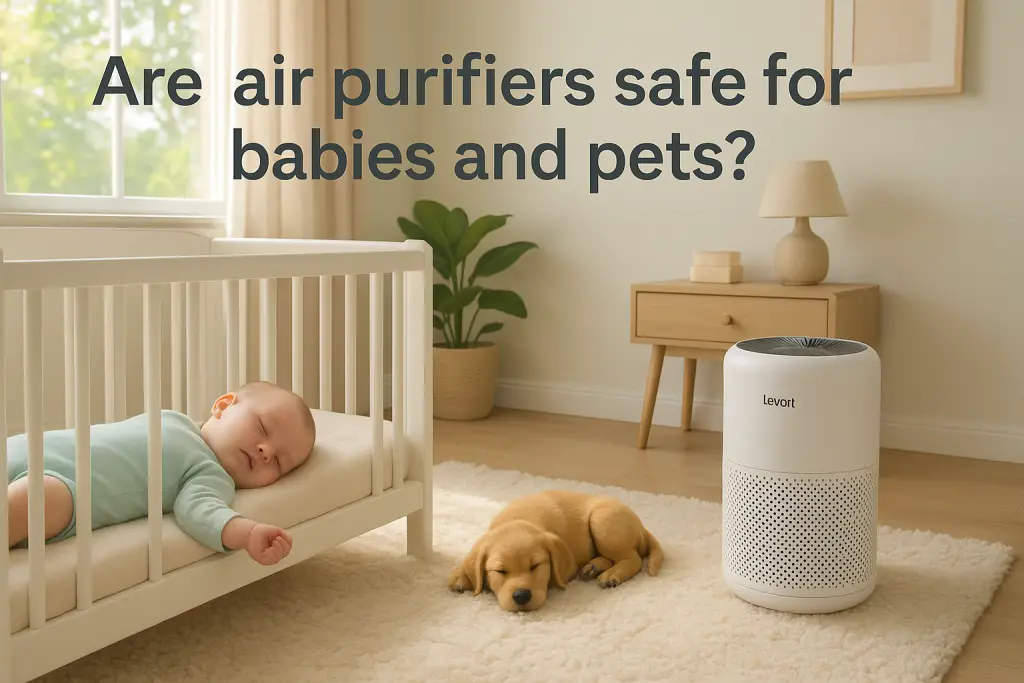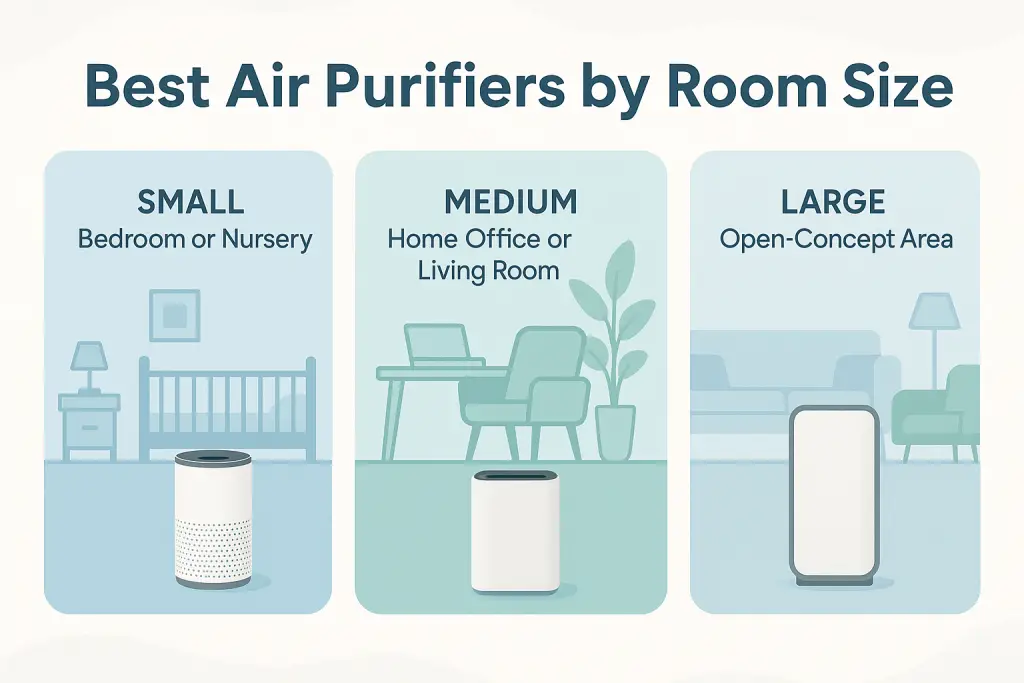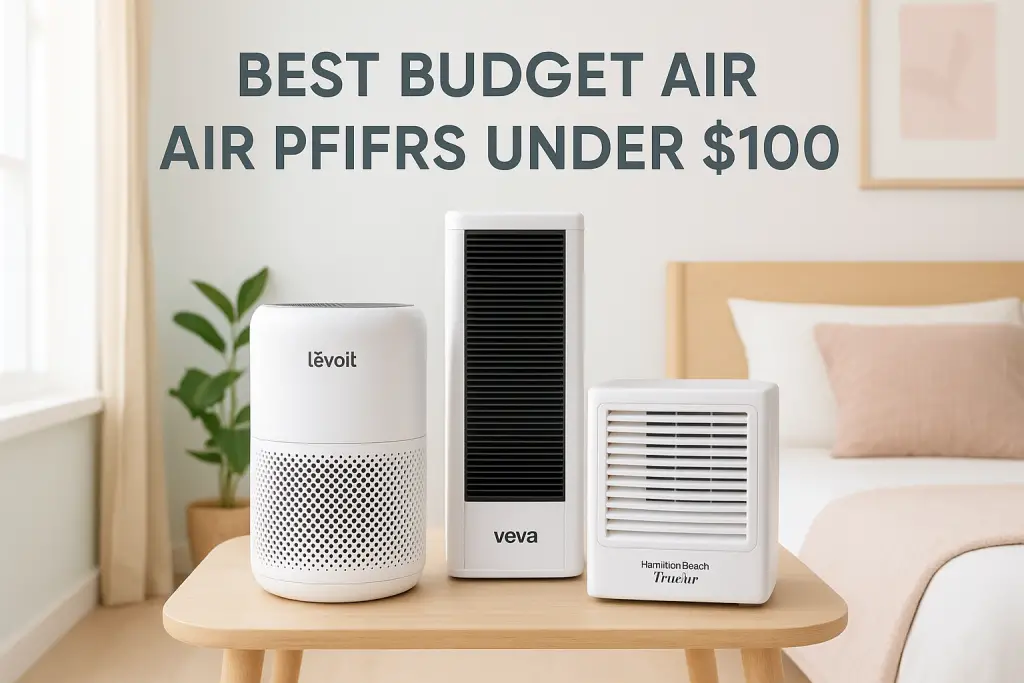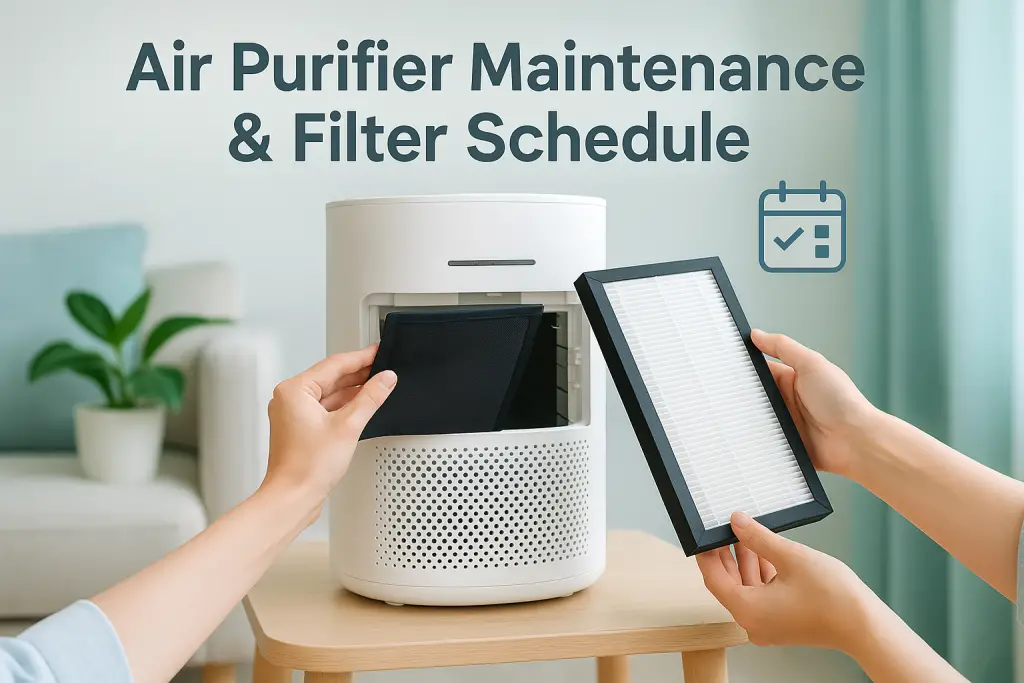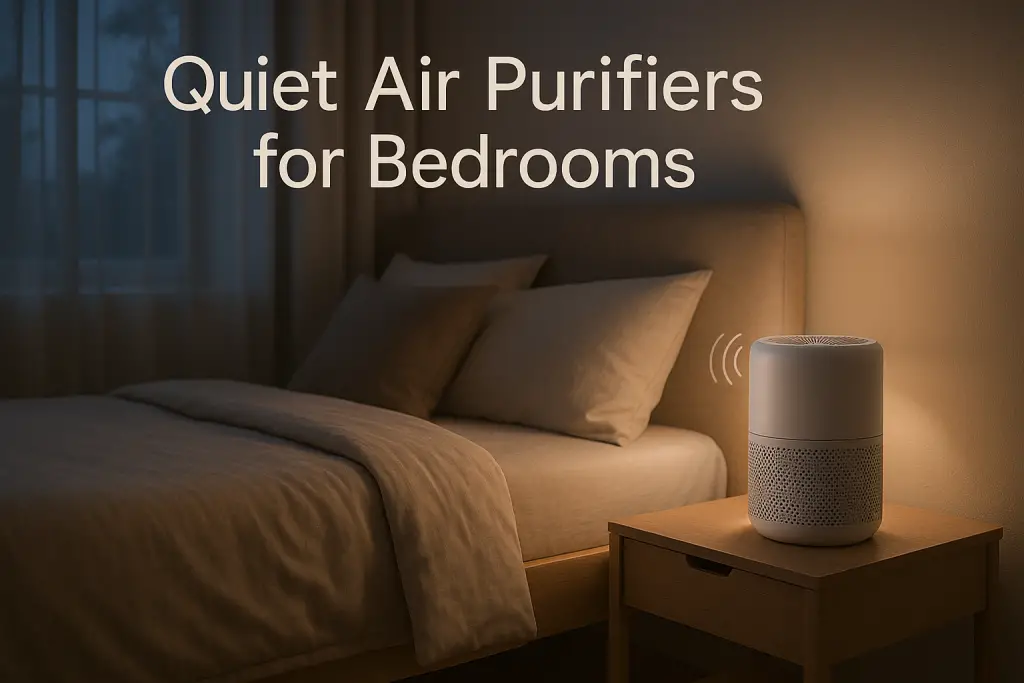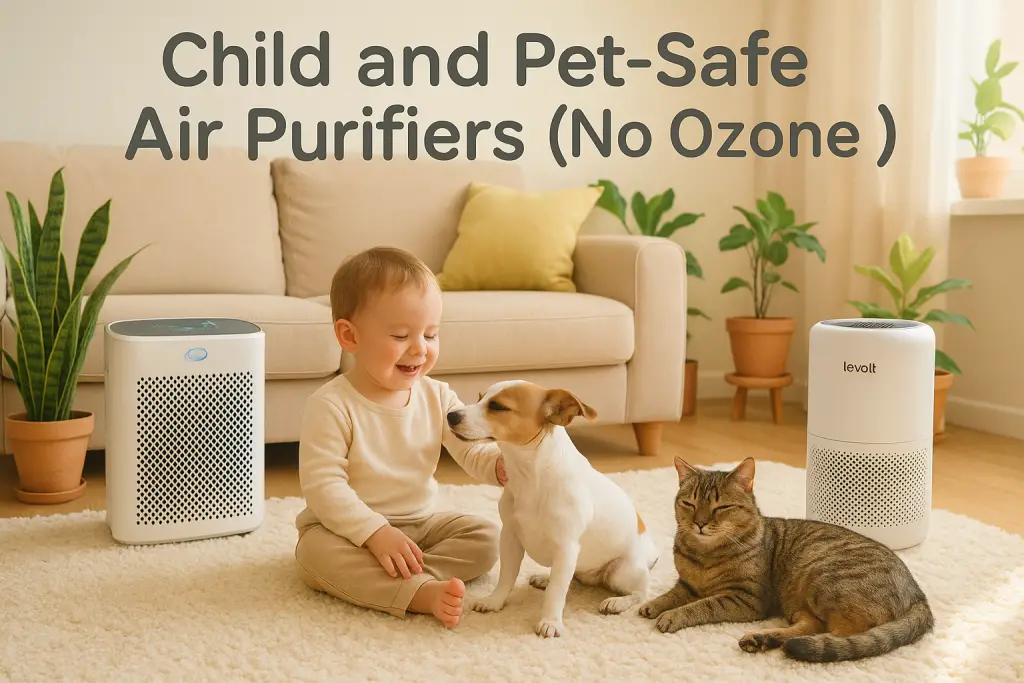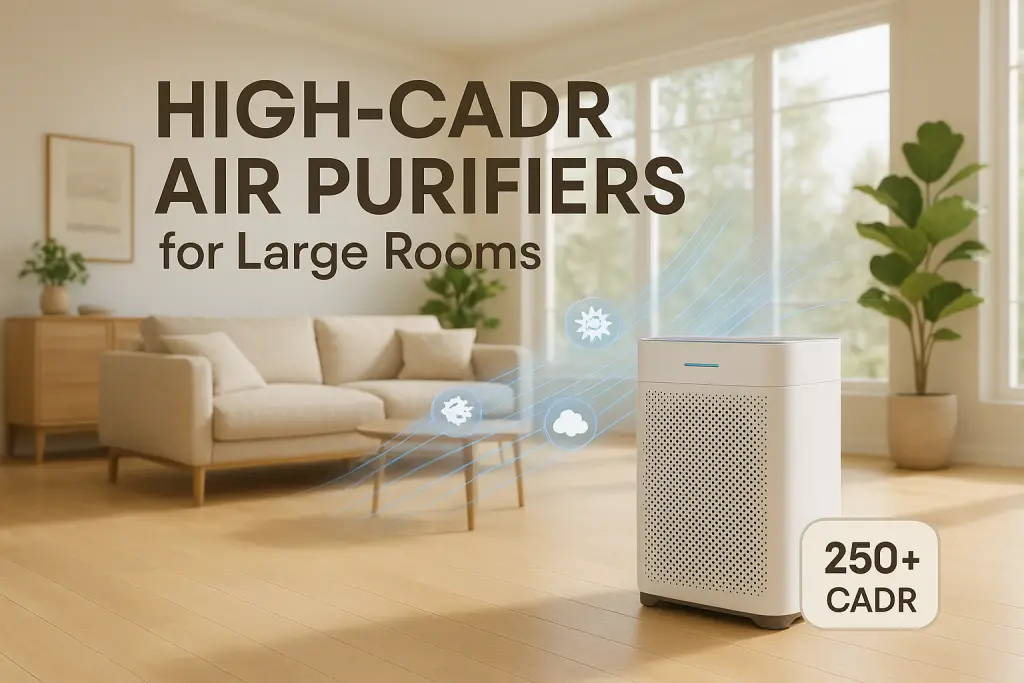Air purifiers can be a great solution for improving indoor air quality, but many parents and pet owners worry about their safety. Yes, air purifiers are safe for babies and pets when you choose the right type with proper features. This comprehensive guide examines the safest air purification technologies for your most vulnerable family members, proper placement strategies, and maintenance requirements to ensure everyone breathes easier at home.
Understanding Air Purifier Safety: The Basics for Families with Babies and Pets
Before diving into specific considerations for babies and pets, let’s establish what makes an air purifier safe for any household member. A safe air purifier effectively removes airborne contaminants without introducing harmful byproducts or posing physical dangers to your family.
Air purifiers work by drawing room air through one or more filters that capture pollutants before circulating clean air back into your space. The Environmental Protection Agency (EPA) reports that indoor air can be 2-5 times more polluted than outdoor air, making air purification an important consideration for families.
According to the American Lung Association, common indoor pollutants include:
- Dust and dust mites
- Pet dander and hair
- Pollen
- Mold spores
- Bacteria and viruses
- Volatile organic compounds (VOCs)
- Smoke particles
The right air purifier can address these concerns without compromising indoor air quality safety for babies, pets, and other vulnerable family members. However, not all air purification technologies are created equal when it comes to safety.
Common Air Purifier Technologies and Their Safety Profiles
Different air purification technologies offer varying benefits and potential concerns for households with babies and pets.
| Technology | How It Works | Safety Rating | Considerations for Babies and Pets |
|---|---|---|---|
| HEPA Filtration | Captures 99.97% of particles 0.3 microns or larger | Safe | Highly recommended, no emissions, quiet options available |
| Activated Carbon | Adsorbs odors, gases, and VOCs | Safe | Excellent for pet odors, no harmful emissions |
| UV-C Light | Kills bacteria and viruses with ultraviolet light | Use with Caution | Safe when properly sealed, avoid models with ozone leakage |
| Ionizers | Releases charged particles that attach to pollutants | Use with Caution | Some produce trace ozone, choose only certified low-ozone models |
| Ozone Generators | Produces ozone to oxidize pollutants | Not Recommended | Harmful to developing lungs and pet respiratory systems |
| PECO Technology | Photo Electrochemical Oxidation breaks down pollutants | Safe | No harmful byproducts, suitable for nurseries and pets |
| Photocatalytic Oxidation | Uses UV light and catalyst to convert pollutants | Use with Caution | Some models may produce trace VOCs or ozone |
HEPA and activated carbon filtration systems offer the safest options for households with babies and pets. These technologies physically trap pollutants without releasing any potentially harmful byproducts into your air.
Air Purifier Safety Considerations Specifically for Babies
Babies have unique respiratory and developmental characteristics that require special attention when choosing and using an air purifier.
“Infants breathe faster than adults and take in more air relative to their body weight, which means they can be more vulnerable to air pollutants,” explains Dr. Jennifer Miller, pediatric pulmonologist. “Their developing lungs and immune systems are particularly sensitive to irritants that might not affect adults as significantly.”
Key safety considerations for babies include:
- Noise levels: Babies have sensitive hearing and need quiet environments for proper sleep
- Air purifier placement: Units should be positioned away from cribs but close enough to be effective
- EMF emissions: Some parents prefer models with lower electromagnetic field emissions
- Filter security: Ensure filters cannot be accessed by curious babies
- Certification: Look for CARB (California Air Resources Board) certification, which ensures the unit does not emit harmful levels of ozone
Research published in the Journal of Pediatric Health shows that improving indoor air quality can reduce respiratory symptoms in infants by up to 30%. Removing VOCs and formaldehyde with quality air purifiers is particularly important for babies, as these chemicals are commonly found in new nursery furniture, mattresses, and paints.
Noise Levels and Baby Sleep: Finding the Right Balance
Noise level is a critical consideration for air purifiers used in nurseries, as it can impact your baby’s sleep quality and development.
| Noise Level | Comparison Sound | Recommendation for Nurseries |
|---|---|---|
| 20-30 dB | Whisper, rustling leaves | Ideal for nurseries, won’t disturb sleep |
| 30-40 dB | Quiet library, refrigerator hum | Acceptable, may provide helpful white noise |
| 40-50 dB | Quiet office, light rainfall | Use only on low settings during sleep |
| 50+ dB | Normal conversation, dishwasher | Too loud for nurseries during sleep |
“Many parents don’t realize that consistent background noise above 50 decibels can affect a baby’s sleep cycles,” notes Susan Chen, pediatric sleep consultant. “However, a gentle white noise between 30-40 decibels can actually help some babies sleep better by masking household sounds.”
Most modern air purifiers offer quiet operation modes specifically designed for bedrooms and nurseries. When shopping, check the decibel ratings at different fan speeds and test the noise level before placing the unit permanently in your baby’s room.
Baby Safety Features to Look For in Air Purifiers
When selecting an air purifier for a nursery or area where your baby spends time, these specific safety features deserve your attention.
- Child-lock controls: Prevents babies and toddlers from changing settings
- Tip-over protection: Automatically shuts off if the unit falls over
- Hidden cord storage: Reduces strangulation hazards from dangling cords
- Filter replacement indicators: Alerts you when filters need changing to maintain effectiveness
- Smooth, easy-to-clean surfaces: Prevents dust buildup which can worsen air quality
- Multiple certifications: Look for CARB compliance, Energy Star rating, and AHAM (Association of Home Appliance Manufacturers) verification
The Levoit Core 300 air purifier (check price on Amazon) includes most of these safety features and is popular for nurseries due to its quiet operation and effective HEPA filtration.
Air Purifier Safety Considerations Specifically for Pets
Pets have unique sensitivities and behaviors that affect air purifier safety and effectiveness in your home.
“Animals, especially birds and small mammals, can be even more sensitive to air quality than humans,” explains Dr. Mark Thompson, veterinary respiratory specialist. “Their faster respiration rates and smaller lung capacity make them vulnerable to airborne irritants, which is why choosing the right air purification technology is crucial.”
Each pet species has different respiratory characteristics:
- Dogs breathe primarily through their noses and have moderate sensitivity to airborne irritants
- Cats have highly sensitive respiratory systems and can develop asthma-like conditions
- Birds have unique respiratory systems that make them extremely vulnerable to airborne toxins
- Small mammals like rabbits and guinea pigs have delicate respiratory tracts easily irritated by poor air quality
While air purifiers help remove pet dander and odors, some technologies can produce byproducts harmful to the very animals you’re trying to protect. A proper air purifier protocol for allergy and asthma prevention benefits both humans and pets in your household.
Species-Specific Air Purifier Considerations
Different pets have vastly different respiratory systems and sensitivities to air purification technologies.
| Pet Type | Sensitivity Level | Recommended Technologies | Technologies to Avoid |
|---|---|---|---|
| Dogs | Medium | HEPA, Activated Carbon | Ozone Generators |
| Cats | Medium-High | HEPA, Activated Carbon | Ozone, High-output Ionizers |
| Birds | Extremely High | HEPA only, with no additives | Ozone, Ionizers, UV-C, Essential Oils |
| Small Mammals | High | HEPA, Low-output Carbon | Ozone, Strong Odor Controls |
| Reptiles | Medium-Low | HEPA, Activated Carbon | Ozone Generators |
Warning signs of respiratory distress in pets include:
- Increased respiratory rate or effort
- Open-mouth breathing (especially in cats)
- Wheezing or unusual sounds
- Lethargy or behavioral changes
- Reduced appetite
“Bird owners should be particularly cautious,” warns Dr. Thompson. “Birds can develop respiratory distress from even low levels of airborne irritants that might not affect other pets. Stick with pure HEPA filtration for households with birds.”
Managing Pet Behavior Around Air Purifiers
Curious pets can interact with air purifiers in ways that create safety concerns or reduce effectiveness.
Common problematic behaviors include:
- Chewing on power cords
- Knocking units over during play
- Urinating on or marking the unit
- Shedding excessive fur directly into intake vents
- Sleeping against the unit, blocking airflow
Solutions to manage these behaviors:
- Use cord protectors or concealers to prevent chewing
- Place units on stable surfaces away from pet play areas
- Consider wall-mounting options for smaller units
- Use pet gates to create a safety perimeter if needed
- Choose units with adequate pre-filters that can handle pet hair
If your pet seems disturbed by an air purifier, they may be sensitive to the noise, airflow, or subtle vibrations. Try placing the unit in a different location or using it when pets are in another room until they become accustomed to it.
Are Air Purifiers Safe for Babies and Pets? Integrated Solutions for Households
Managing air quality in a home with both babies and pets presents unique challenges that require balanced solutions. The good news is that with careful selection and placement, a single approach can benefit all household members.
A comprehensive safe indoor air checklist with specific targets and monitoring can help you maintain ideal conditions for both babies and pets. Your strategy should address the competing needs of removing pet allergens while maintaining quiet operation for your baby’s sleep.
For homes with multiple rooms, consider this distribution approach:
- Primary unit: Largest capacity in the main living area where family and pets gather
- Secondary unit: Quiet-operation model in the nursery focused on sleep quality
- Optional third unit: Near pet beds, litter boxes, or other pet-specific areas
The Blueair Blue Pure 211+ (check price on Amazon) offers an excellent balance of powerful filtration for pet dander with quiet operation modes suitable for homes with babies.
Room-by-Room Placement Guide for Homes with Babies and Pets
Optimal air purifier placement varies significantly by room type and usage patterns in homes with babies and pets.
Nursery Placement:
- Position at least 3 feet from the crib
- Place unit between the door and crib to capture incoming air
- Keep at least 1 foot clearance on all sides for proper airflow
- Avoid placing on carpet if possible (collects dust)
- Keep away from humidifiers or heaters
Living Room Placement:
- Position near but not directly in pet resting areas
- Place between pet zones and baby play areas
- Elevate unit at least 2 feet if possible to improve circulation
- Keep away from curtains or furniture that may block airflow
Bedroom Placement:
- Position on the side of the room opposite from pet beds
- Keep at least 3 feet from sleeping areas
- Avoid placement directly under air vents
- Use nighttime/sleep mode for quieter operation
In small spaces where babies and pets share rooms, prioritize placing the purifier between the pet’s area and the baby’s sleep space to intercept dander and allergens before they reach your child.
Choosing the Right Air Purifier Technology for Your Baby and Pet Household
With numerous air purification technologies available, selecting the right one for a household with both babies and pets requires careful consideration.
For most families with babies and pets, a multi-stage air purifier with the following features offers the best combination of safety and effectiveness:
- True HEPA filtration: Captures 99.97% of particles 0.3 microns in size, including pet dander, dust mites, and pollen
- Activated carbon filter: Absorbs pet odors, VOCs, and harmful gases
- Washable pre-filter: Captures larger particles like pet hair before they reach the main filter
- Quiet operation mode: Allows for nighttime use in nurseries
- Filter change indicator: Ensures timely maintenance
- CARB certification: Guarantees no harmful ozone production
The Winix 5500-2 (check price on Amazon) offers all these features at a reasonable price point, making it popular for families with both babies and pets.
Additional features worth considering:
- Air quality sensors and auto mode
- Timer functions
- Smart connectivity with app control specifically designed for modern air purifiers
- Washable vs. replaceable filters (cost consideration)
Features to avoid for homes with babies and pets:
- Ozone generators (harmful to developing lungs and pet respiratory systems)
- Ionizers without ozone-free certification
- Essential oil diffusers (can irritate pets, especially birds and cats)
Maintaining Your Air Purifier Safely in Homes with Babies and Pets
Proper maintenance is crucial for air purifier effectiveness and safety, particularly in homes with both babies and pets.
For households with pets, filter maintenance frequency typically needs to increase by 30-50% compared to standard recommendations. A home with multiple pets may need filter changes every 2-3 months rather than the standard 6 months.
Essential maintenance tasks include:
- Regularly inspecting pre-filters for pet hair buildup (weekly)
- Vacuuming external vents and surfaces (bi-weekly)
- Replacing HEPA filters according to manufacturer schedule (adjusted for pet quantity)
- Replacing carbon filters more frequently if pet odors persist
- Wiping down exterior surfaces with a damp cloth (monthly)
- Checking for proper airflow and unusual noises (monthly)
Season-specific maintenance:
- Spring: More frequent cleaning during peak shedding and allergy seasons
- Summer: Check for dust buildup during high-use AC periods
- Fall: Replace filters before winter when windows stay closed
- Winter: Monitor performance during peak indoor time
The Coway AP-1512HH (check price on Amazon) features a convenient filter indicator system that accounts for actual usage patterns rather than just time elapsed, making maintenance easier for busy families.
Filter Replacement Safety with Babies and Pets
Replacing air purifier filters in a home with babies and pets requires special precautions to maintain air quality and prevent exposure to collected contaminants.
Follow these steps for safe filter replacement:
- Schedule filter changes when babies and pets are in another room
- Turn off and unplug the unit completely
- Take the unit outside or to a well-ventilated utility area if possible
- Wear a mask to avoid inhaling accumulated particles
- Place old filters directly into a sealed plastic bag
- Clean the interior housing with a damp cloth before installing new filters
- Install new filters according to manufacturer arrows/markings
- Wash hands thoroughly after handling old filters
For households with severe allergies or asthma, consider these additional precautions:
- Wear disposable gloves when handling old filters
- Use a HEPA vacuum to clean the area after filter changes
- Store replacement filters in sealed plastic until needed
- Mark a calendar or set phone reminders for regular changes
Never tap or vacuum HEPA filters to extend their life, as this can damage the delicate filter structure and release captured particles back into your air.
Special Situations and Emergency Considerations
Certain situations require special adjustments to your air purification strategy to protect both babies and pets.
Wildfire Smoke Events:
- Run air purifiers on highest setting in rooms with babies and pets
- Limit outdoor time for pets during peak smoke periods
- Consider creating one “clean room” with multiple air purifiers
- Change filters more frequently during and after smoke exposure
High Pollen Seasons:
- Increase purifier fan speed during peak pollen days
- Wipe down pets when they come indoors
- Consider MERV 13 or higher filters for central HVAC
- Run air purifiers 2 hours before baby sleep times
Pet Shedding Seasons:
- Increase grooming frequency outdoors or in utility areas
- Clean pre-filters weekly during heavy shedding
- Consider adding an additional pre-filter layer during peak seasons
New Baby Arrival in Pet Household:
- Deep clean and run air purifiers 2 weeks before baby’s arrival
- Place air purifiers in the nursery 24/7 before baby comes home
- Consider separate air purifiers for pet areas and nursery
- Establish “pet-free zones” with physical barriers if needed
During situations with cigarette smoke or other strong airborne contaminants, you may need to temporarily relocate vulnerable pets and babies to areas with cleaner air or homes of friends and family while addressing the issue.
Frequently Asked Questions About Air Purifiers for Babies and Pets
Can air purifiers harm babies or pets?
Air purifiers using HEPA and activated carbon technologies are completely safe for babies and pets. Avoid ozone generators and ionizers without CARB certification, as these can produce byproducts that irritate sensitive respiratory systems.
Is it safe to run an air purifier 24/7 with babies and pets?
Yes, HEPA air purifiers are designed for continuous operation and are completely safe to run all day and night. In fact, continuous operation provides the best air quality results for both babies and pets.
Do air purifiers remove pet dander effectively?
Yes, HEPA air purifiers capture 99.97% of pet dander particles, which typically range from 0.5 to 100 microns in size. For best results, place units where pets spend the most time and groom pets regularly.
Can air purifiers help with baby congestion?
Yes, by removing airborne irritants like dust, dander, and mold spores, air purifiers can reduce triggers for baby congestion. For acute congestion, pair with proper humidity (40-60%) using a separate humidifier if needed.
Are air purifiers or humidifiers better for nurseries?
They serve different purposes. Air purifiers remove airborne contaminants, while humidifiers add moisture to dry air. Many nurseries benefit from both devices, especially during winter when indoor heating creates dry conditions.
Do air purifiers help with pet allergies?
Yes, HEPA air purifiers are highly effective at removing the pet allergens that cause reactions in sensitive individuals. For severe allergies, combine air purification with frequent vacuuming using a HEPA-filtered vacuum.
What are the energy consumption costs of running air purifiers continuously?
Most modern air purifiers use 30-100 watts on medium settings, similar to a light bulb. Energy-efficient models with Energy Star ratings typically cost $30-$50 annually to operate continuously.
Conclusion: Creating a Safe Air Environment for Your Entire Family
Creating a healthy air environment that serves both your baby and pets is achievable with the right approach and equipment. By selecting air purifiers with HEPA and carbon filtration, placing units strategically throughout your home, and maintaining them properly, you can significantly improve indoor air quality for all family members.
Key takeaways include:
- HEPA and activated carbon technologies provide the safest filtration for babies and pets
- Proper placement between pet areas and baby spaces maximizes effectiveness
- Regular maintenance is essential, especially in homes with pets
- Different pets have varying sensitivities requiring specific considerations
- Quiet operation is crucial for nurseries and sleep areas
Dr. Miller, our pediatric specialist, emphasizes: “The investment in proper air purification pays dividends in respiratory health for both developing babies and the pets that complete your family.”
| Photo | Air Purifier Model | Best for | Price |
|---|---|---|---|

|
WINIX A231 Air Purifier | Asthma & Indoor Pollution | Check Price On Amazon |

|
Rabbit Air, A3 SPA-1000N Air Purifier | Pet Dander & Odors | Check Price On Amazon |

|
LEVOIT Air Purifier | Best Overall | Check Price On Amazon |

|
GermGuardian Air Purifier | Cigarette & Cooking Smoke | Check Price On Amazon |

|
Coway Airmega Air Purifier | New-borns | Check Price On Amazon |

|
BLUEAIR Air Purifier | Germ & Virus Control | Check Price On Amazon |
